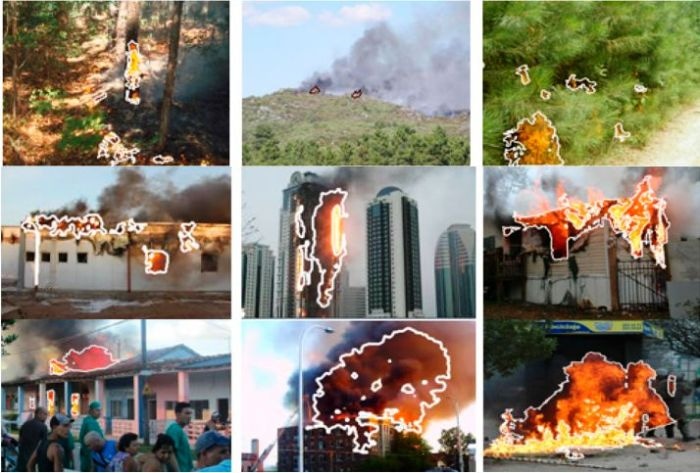Oct 26 2016
 Fire detection with FFDI in different scenes. (Credit: CITSEM-UPM)
Fire detection with FFDI in different scenes. (Credit: CITSEM-UPM)
UPM researchers are now involved in the development of a technique to detect forest fires with the help using a new color index. This color index has been chosen to detect the tonalities of smoke and flames, and is based on the methods used for vegetation classification.
Researchers from the Research Center on Software Technologies and Multimedia Systems for Sustainability (CITSEM) at Universidad Politécnica de Madrid (UPM) have successfully developed a technique to detect forest fire and the smoke arising during combustion using a color treatment. Since the detection process is fast and precise, this innovative system mainly aims at environmental surveillance systems using drones. This study has been furnished in the recent issue of Sensors Journal.
A research line developed at CITSEM is the study of surveillance systems that are based on imaging processing for their application to various phenomenon that impact the environment like fires, deforestation or floods. Researchers suggest the use of such early detection systems in order to detect and prevent various environmental disasters.
In the case of deforestation, researchers propose a wide range of algorithms that enable the detection of fire and smoke arising during a forest fire and also some of its fundamental characteristics like wind direction, area, etc. In real time, the algorithms are highly accurate and portray low computational load, resulting in addressing the problem in real time and implementing these algorithms in autonomous systems like drones to perform continuous monitoring.
Forest Fire Detection Index (FFDI) is an aspect that is relevant to the developed algorithm. It defines the potential of the developed algorithm to detect under any perspective, including the aerial. In addition, in initial combustion processes, effective detections have been proven with the help of this algorithm, and also in other situations different from forest environments.
This newly developed technique can be integrated in real-time in Unmanned Aerial Systems (drones) in order to monitor a wider area than through fixed surveillance systems. This is expected to provide more cost-effective results compared to the standard systems implemented in satellites or helicopters. These drones can easily reach inaccessible locations without endangering people’s safety.
The authors said: “we carried out diverse detection tests using commercial drones and the results confirm the utility, efficiency, versatility and low cost of the developed algorithm, becoming an efficient tool for surveillance and monitoring of such events".